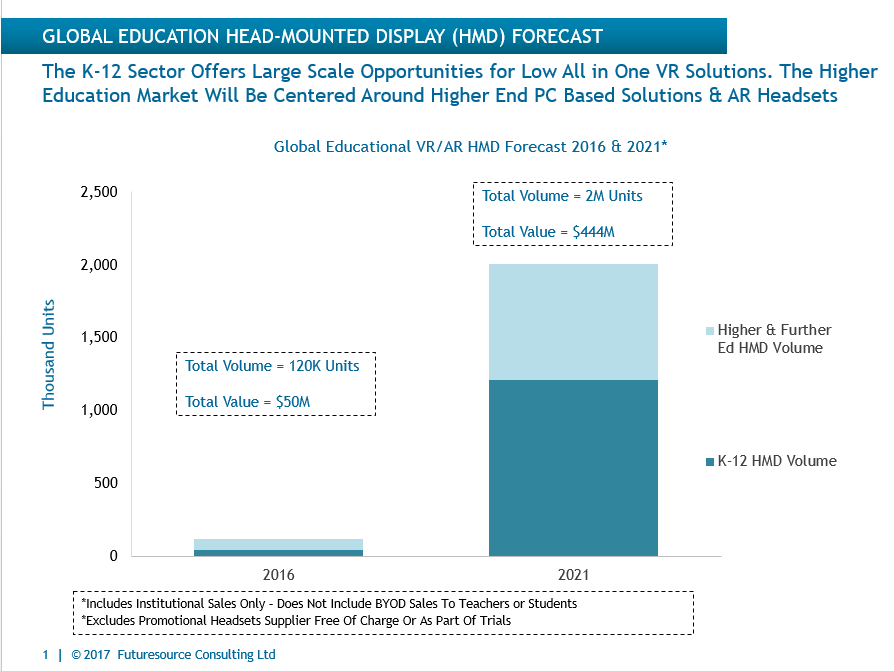Immersive Tech, Virtual Reality Market to Soar Worldwide, New Analysis Predicts
The number of K-12 students using various “immersive” technologies worldwide is poised to soar over the next few years, driven by surging interest from specific regions such as Asia and North America, a new analysis predicts.
But companies developing and selling tools in virtual and augmented reality may struggle to find a way to monetize the technology, according to the analysis by Futuresource Consulting, a U.K.-based market research firm.
In the pre-college market, the number of students who access virtual, augmented, or mixed reality through head-mounted displays will leap from 2.1 million in 2016 to nearly 83 million in 2021, Futuresource says.
In Futuresource’s analysis, individuals are counted as users of virtual reality or other immersive technologies if they’re using those tools for even a short period of time—such as just 10 minutes, once a year, said Ben Davis, a Futuresource analyst and co-author of the report, in an e-mail.
Much of the projected new takeup of immersive technology is likely to occur in Asian countries—particularly China—where private sector and government-led investment in the platforms “will help drive scale,” Davis said. But demand for immersive tech will also increase in North America, according to Futuresource.
One measure of projected growth for VR for both K-12 and higher education is shown in the chart below:

Backers of virtual reality tout what they see as its potential to enthrall students and get them interested in computer- and STEM-focused lessons.
To date, however, augmented- and virtual-reality tools haven’t made much of a mark in U.S. schools, recent research suggests. A survey released earlier this year by the nonprofit Project Tomorrow found that just 5 percent of U.S. teachers said they were using virtual or augmented reality in their classroom. The numbers were slightly higher among high school and computer science teachers.
Futuresource says that manufacturers of head-mounted displays, such as Microsoft, Google, and Oculus, are establishing partnerships with educational publishers and content providers to develop educational content, “hoping to seed large-scale adoption.”
But it may be difficult for companies with virtual reality products to sell them in large numbers directly to school districts, says Futuresource. That’s partly because much of VR today is sold as short-form “snackable” experiences—content delivered in short bursts—which makes it a “difficult sell for the K-12 education publishing sector, which still largely relies on physical textbooks, a three- to five-year replacement model and a direct sales channel.”
Some companies, on the other hand, such as Pearson, are integrating VR experiences into the courseware they sell as added features, Davis said. They typically do this without additional cost, in an effort to distinguish themselves from their competitors.
See also:
- Augmented, Virtual Reality Yet to Gain Traction in K-12, Survey Finds
- Oculus Rift Virtual Reality System Weighed by Higher Education Institutions

I was into this is https://vidmate.onl/ sue and tired to tinker around to check if its possible but couldnt get it done. Now that i have seen the way you did it, thanks guys with